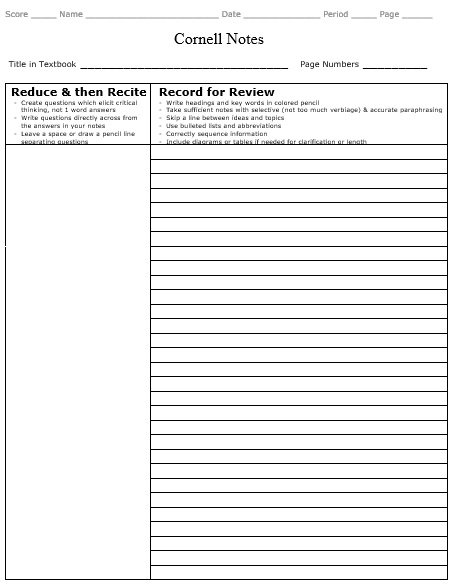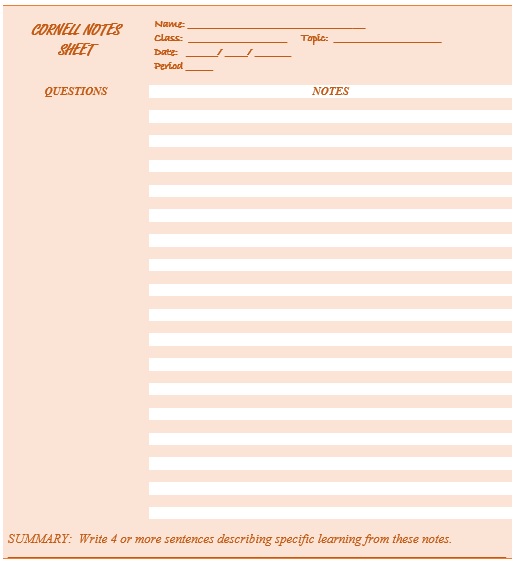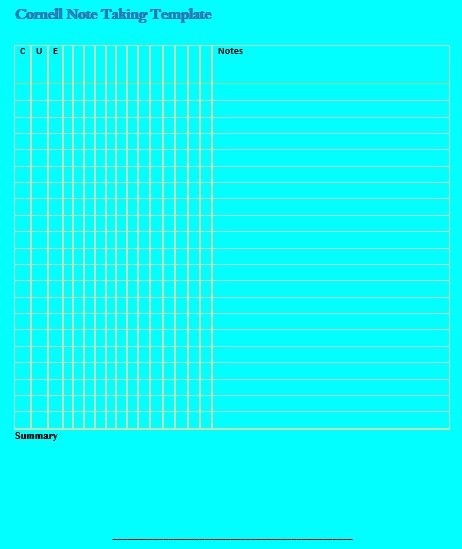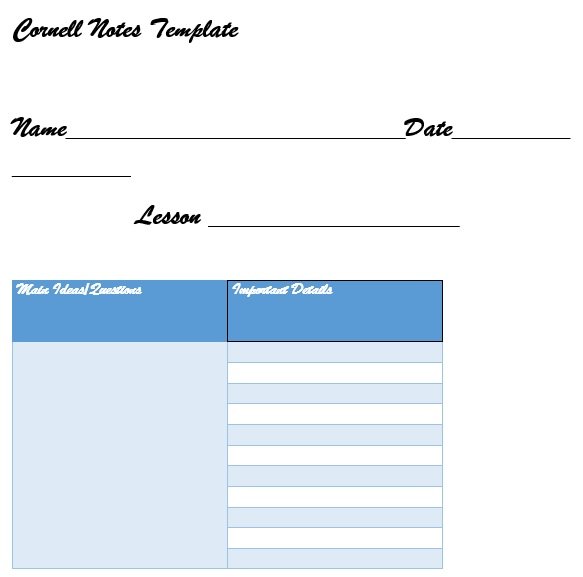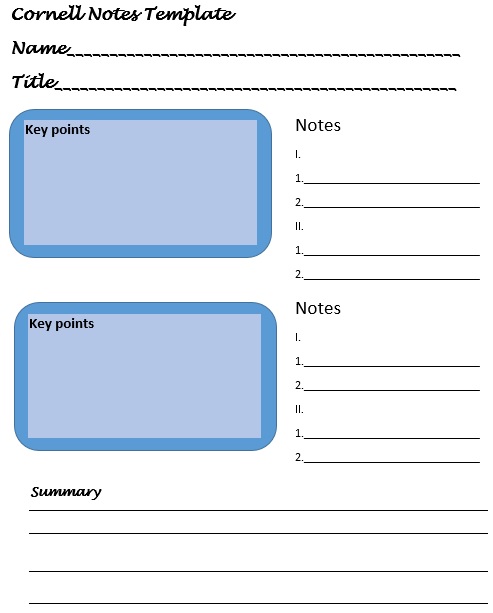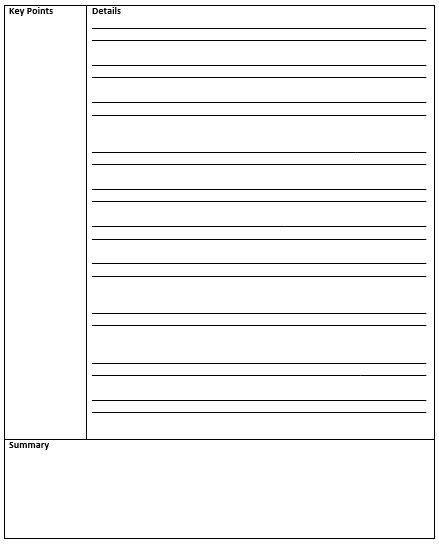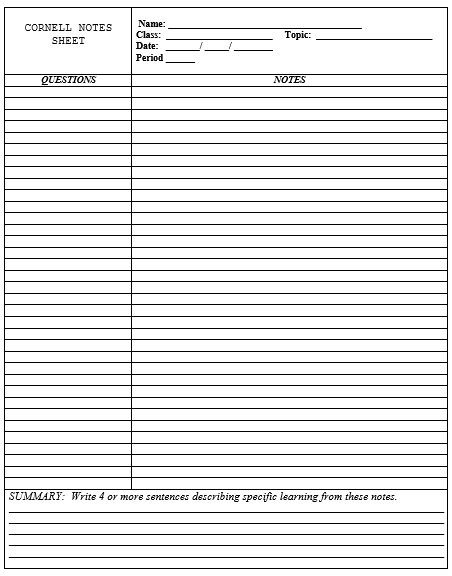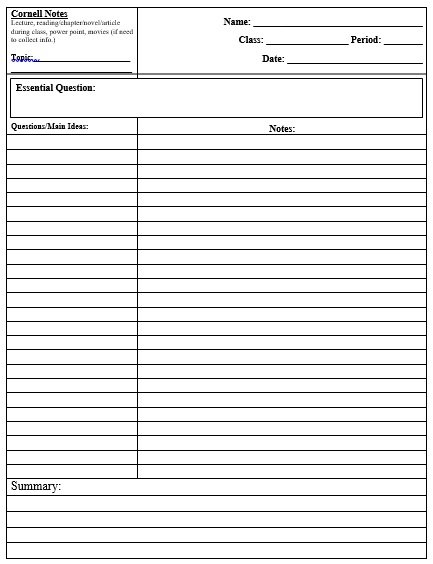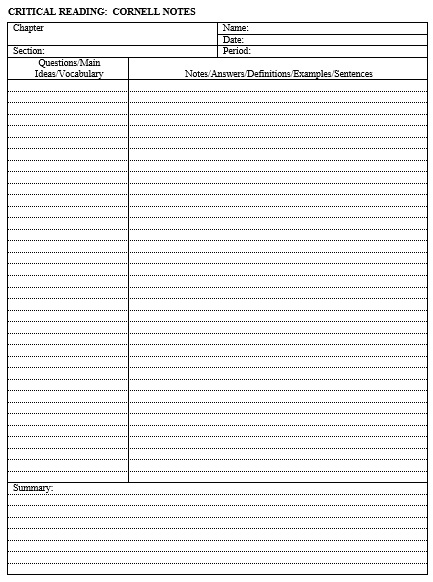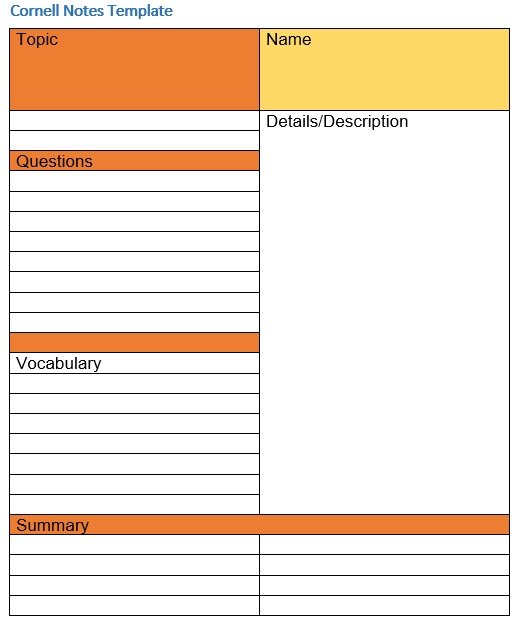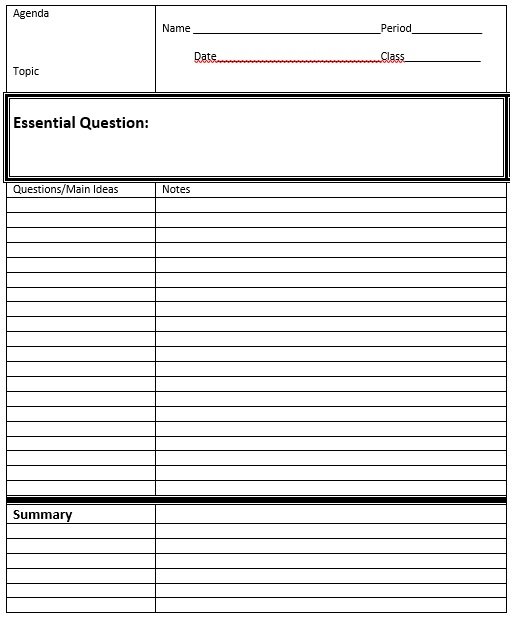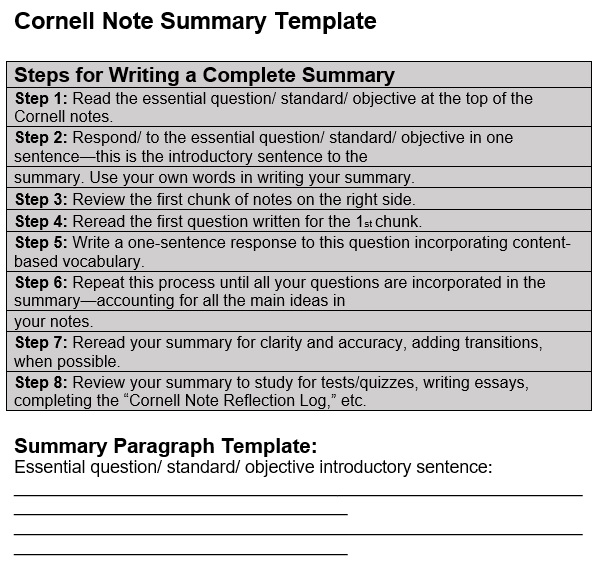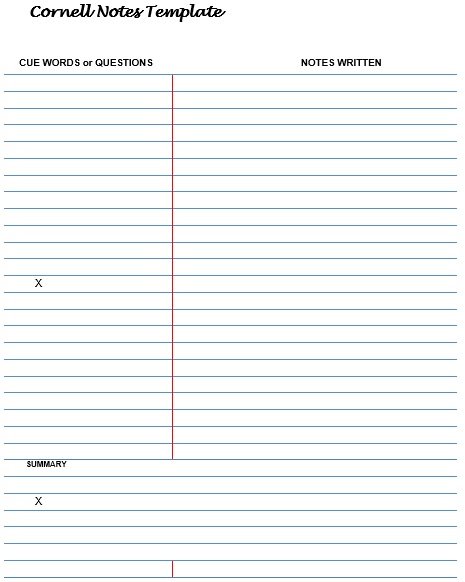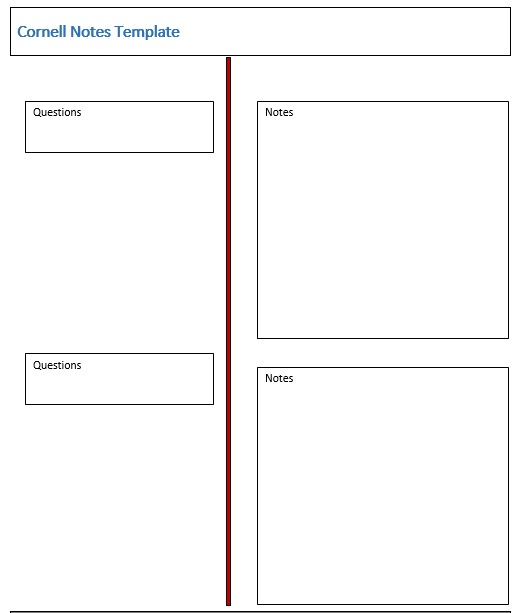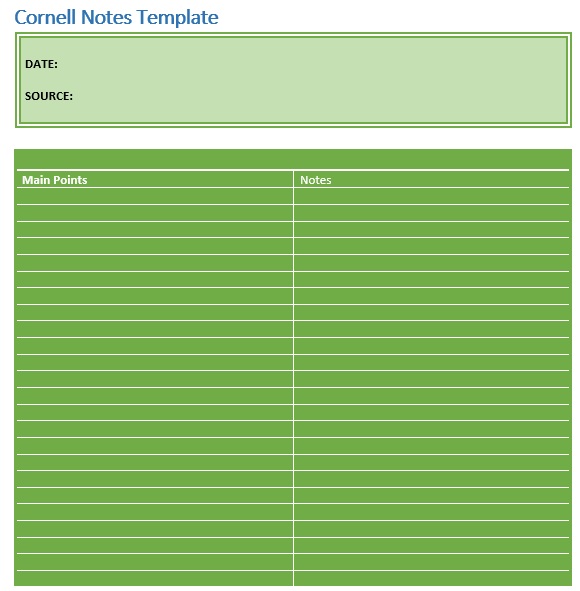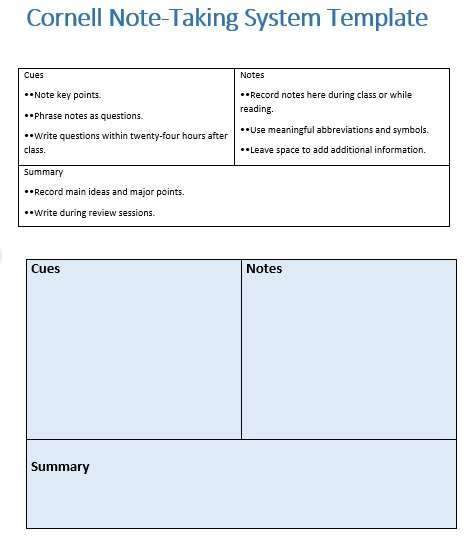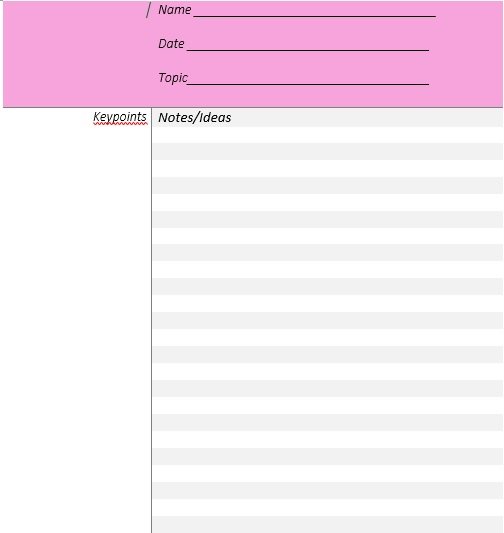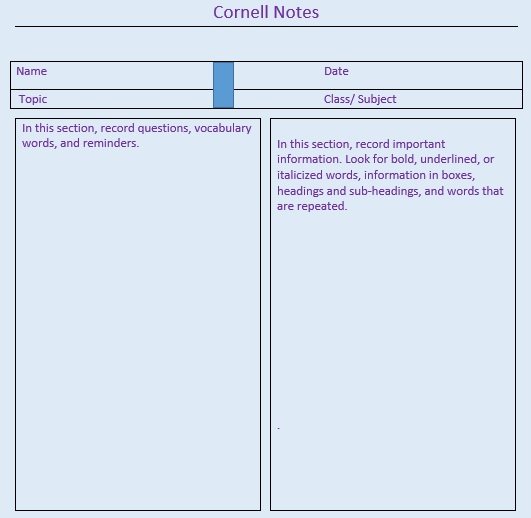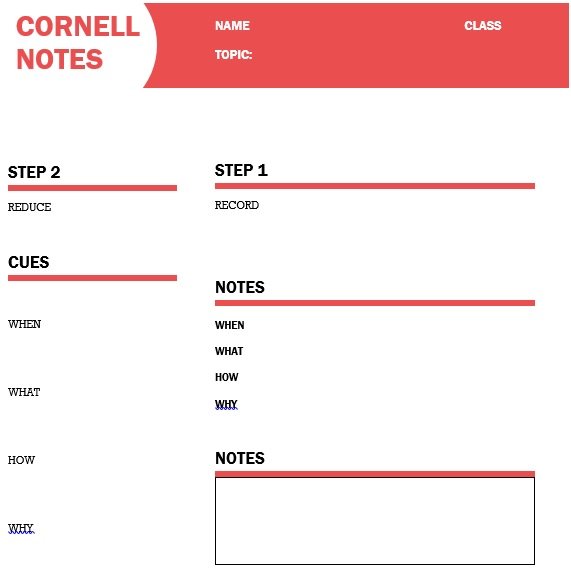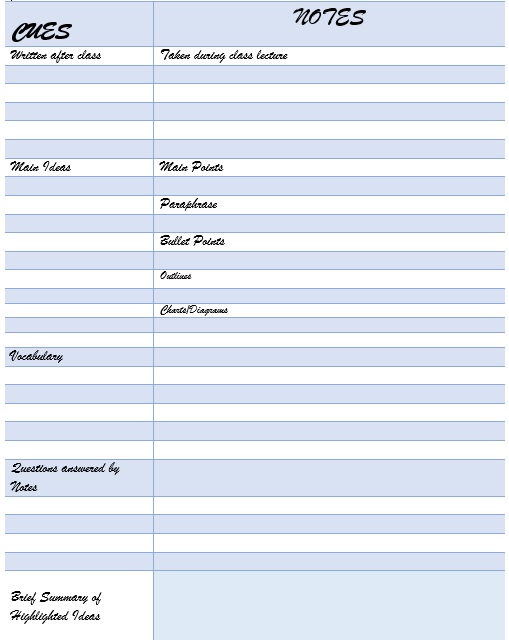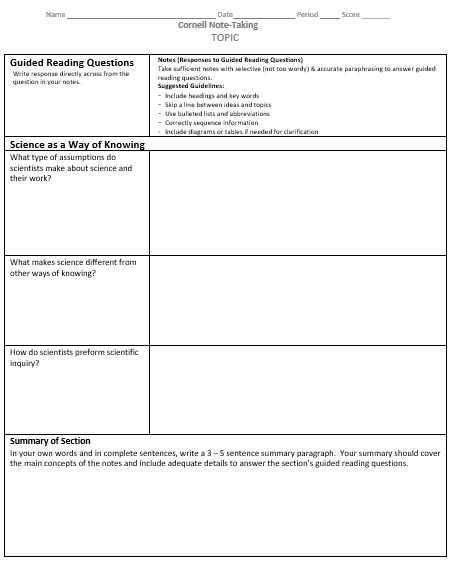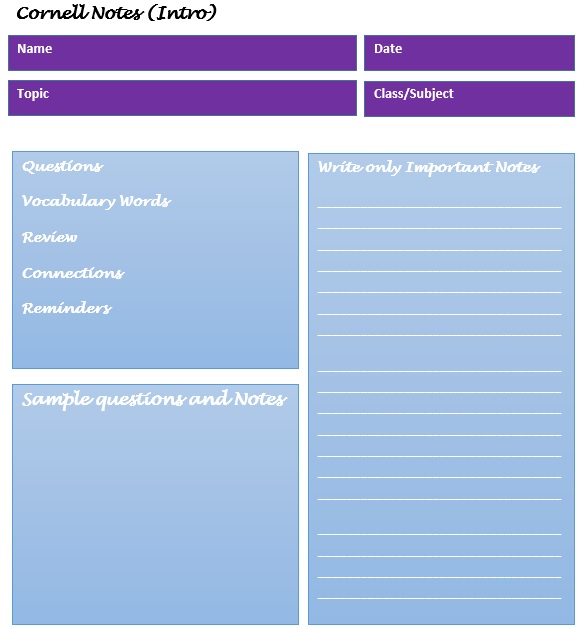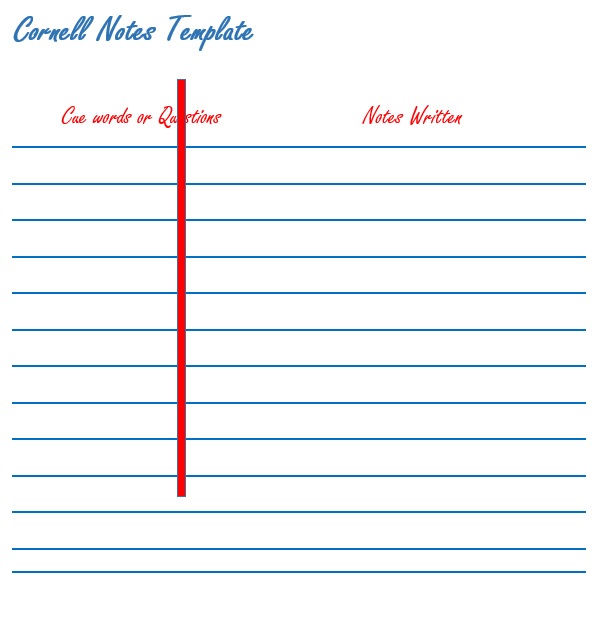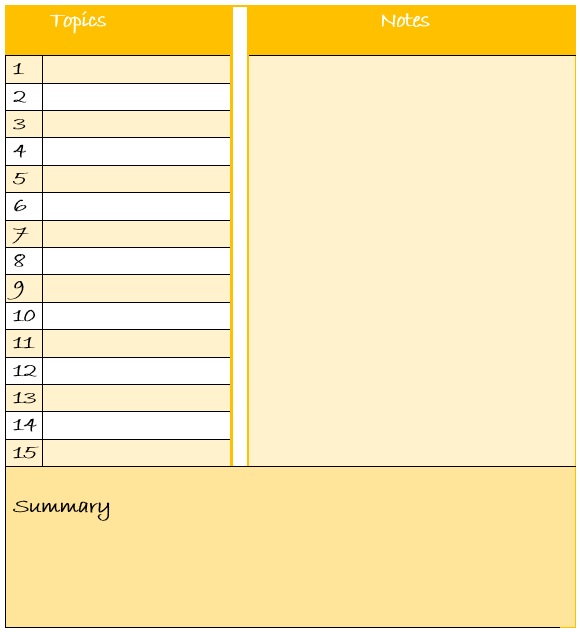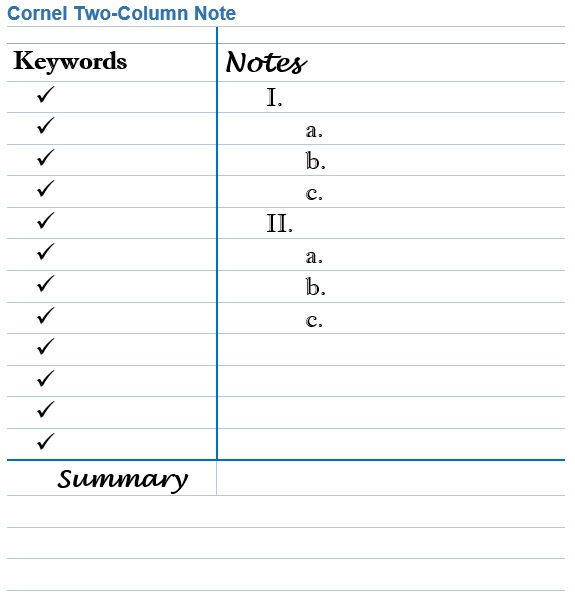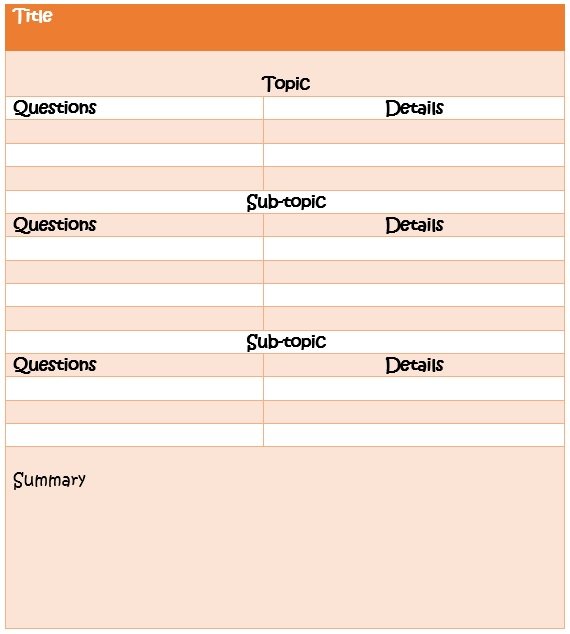Cornell notes were developed by Walter Pauk in 1940. Walter Pauk was an education professor at Cornell University. He invented this system for taking notes in an organized way. He introduced Cornell notes in his book, how to study in college. Furthermore, there are several Cornell notes templates available on various websites so that you can take the help of it.
Table of Contents
- 1 What is a Cornell note system?
- 2 How do you take Cornell notes?
- 3 When taking Cornell notes avoid these mistakes:
- 4 Purpose of Cornell Notes:
- 5 Who can use Cornell notes?
- 6 Important components that should be followed in Cornell notes:
- 7 How to make Cornell note by using MS Word?
- 8 The advantages of Cornell Notes:
- 9 Conclusion:
What is a Cornell note system?
A Cornell note system is basically a system for taking, organizing, and reviewing notes and use by the students of college and higher secondary school. This system is also known by the name of Cornell’s note-taking system. It helps the students to improve their listening and studying skills. However, it’s an interesting system in order to get the most from the lectures.
The Cornell notes divide a single page into three sections i.e. Notes, Cues, and Summary section. The first section i.e. notes section is used for lecture-discussion and to note down what the teacher teaches the students. Here you can leave some extra space to write down important points. After that, just under the notes section, there is a cues section. The cues section is used for reviews and to include some questions that can come in papers, vocabulary words, and the main theme. At the end of the page, there is a summary section use, to sum up, the notes on the page of the main points.
Above all, you should use Cornell notes templates because it is easy to print them out. Also, it helps you in getting an idea about the relevant content.
How do you take Cornell notes?
Here are some tips on how to take Cornell notes;
Tip#1:
At first, state the name of the course along with the date. This thing helps you in keeping your notes in an organized way. It will also make your course context easy.
Tip#2:
You should take notes on the largest section during learning or reading text. Moreover, use telegraphic sentences and phrases because it assists you in understanding what you are learning. Include important information in this section.
Tip#3:
Next, when your teacher is telling something very important than listening to it very carefully and note down it. For example, if your teacher is telling the significance of the material then underline or highlight it.
Tip#4:
You should keep your notes as the outline of your lecture. In order to stay up with the lecture, pay attention to the main points. You must use abbreviations and bullet points rather than writing complete sentences. However, you can also use your own note-taking symbols if you have any.
Tip#5:
Jot down just general ideas in the lecture that will help you in understanding the concept. There is no need to note down all the ideas and examples of the lecture. If you try to note everything in the lecture in hurry then you can’t understand anything properly. You should listen to your teacher carefully and write down the sentences in a telegraphic form. In this way, you can save your time, space, and can build up a good understanding.
Tip#6:
When you have all done with writing down the general ideas then you will also be able to organize your own ideas. Now, you can take a new page draw a space, a margin, and start writing the new ideas. Thus, you can pay attention to studying different parts.
Tip#7:
If you don’t understand something then write a question about it and ask it with your teacher later. In this way, the horizon of context you have written will broaden.
Tip#8:
In the end, after writing the notes and questions, proofread and edit them. Maybe some parts are difficult to read and don’t make any sense so you must have to edit and fix them.
When taking Cornell notes avoid these mistakes:
After knowing how to take Cornell notes, you should also know to avoid certain mistakes during taking the notes;
- Sometimes lectures may become boring but you have to pay attention. Doodling can divert your attention from the lecture so ensure that don’t draw in the middle of the notes. You have to take notes properly as it’s just a fraction of time.
- If you are making Cornell notes for every course so keep separate notes for each course. Hence, when you make separate notes for each course then you will never end up mixing up things.
- Most importantly, if you don’t provide title and date to anything on the page then you will not able to remember things. Therefore, you should provide the title to each page for effective study.
Purpose of Cornell Notes:
The main purpose of Cornell notes is to make note-taking easy for the students so that they can recall the lecture well in the future. It is organized in a way such that the students can easily write down the notes. To note down the important points and questions there are separate columns. In addition, it helps the student to improve their listening skills.
With the help of these notes, students can process a large amount of information during lectures. It also allows the student to listen to the lecture more attentively, easily organize their thoughts, and take notes much faster.
Who can use Cornell notes?
Cornell notes can be used and made by anyone whether they are a student, a professor, a manager, a businessman, or a doctor. These notes prove useful in any field or expertise. Note takers or the audience can use Cornell notes in a meeting. Cornell notes enable them to just take the relevant information. Thus, it relieves them from wasting valuable time.
Important components that should be followed in Cornell notes:
Record:
The student has to write down and record each point told by his/her teacher. So, you should use telegraphic sentences to record lectures as they just contain 5 to 6 words or even less than that.
Questions:
The next step is to make questions based on the notes. These questions will help you in understanding the concepts that were explained in the class.
Recite:
Search out the keywords and read them aloud and answer all of the questions, facts, and ideas.
Reflect and review:
When you are asking the questions from yourself then search about it in the depth. After maintaining your notes review them too.
How to make Cornell note by using MS Word?
Here are the steps to make Cornell note by using MS Word;
Set the page dimensions
First, open a new document in MS Word. Through the Page Layout, set the margins and choose Custom Margins. The left and right margins should be at 0, at 1 for the top, and a 2-inch margin at the bottom. To apply the changes, choose Fix. You leave space for your course, date, subject, and summary at the top and bottom by creating margins.
Make the table
For the Cornel note template, make the two main columns in the center of the page. Format the table 2 columns wide, 34 rows long. The width of the left-hand column is 2.4 inches and make the right-hand column 6 inches wide. Make the height of the row 0.25 inches.
Change table properties
If you want to remove the lines of the left-hand section then right-click anywhere in the left-hand column, click Select, and then Column. After that, right-click again and choose Merge Cells.
Save your Cornell notes
Don’t forget to save your file in your Microsoft Word App Data folder. Name the file as Cornell note template.
The advantages of Cornell Notes:
Here are the advantages of Cornell notes;
- With the help of Cornell notes, you can make more organized notes.
- They make you able to identify keywords and concepts more quickly from a discussion or a lecture.
- It acts as a study guide for the students. It saves students more time and enables them to study more than one subject.
- You can navigate the information easier because Cornell notes present a cleaner visual.
Conclusion:
In conclusion, the Cornell Notes Template helps the students to take notes in an organized way and understand them later.

